In June, after we returned from our trip to Hawaii, we talked to Zach’s mother (Virginia), and decided that we all wanted to take a trip to Alaska, if it wasn’t too late to organize it for this summer. For both Zach and Jennifer, Alaska was the only state we hadn’t visited yet, so completing the Visit All 50 States bucket list was definitely part of our motivation; we’d been talking about visiting Alaska for several years. Also, people we knew had visited Alaska recently and raved about it, and Virginia was particularly excited to see a glacier up close and in person, so we all really wanted to go.
Planning and Itinerary
Alaska is a huge state — comprising 18% of the United States’ total area. So, there’s a lot to see, and the first step of planning our trip was to decide on a few parts of Alaska that we could feasibly see in a 2-3 week trip, given our preferences and activities we were all up for doing (mainly short hikes and sightseeing). We decided the main places we wanted to visit were Denali, Kenai Fjords, Glacier Bay, and the Inside Passage.
The next step was to figure out how to get there and get around. Most of southeast Alaska is only accessible by boat or plane (either on islands or mainland areas that aren’t connected by road to the Canadian mainland). You can drive to the mainland parts of Alaska (Anchorage, Fairbanks, Denali, etc.), but although we live in Washington (the closest state to Alaska), driving there is a journey of several days each way (comparable to driving to Georgia). Another option is to take your car on the Alaska Marine Highway ferries for a 3 day journey from Bellingham WA to either Haines or Skagway, and from there you can drive north to reach mainland Alaska (which is still a long drive). A third option is to piece together boat, plane, train, car, and bus transportation, which is what we opted for.
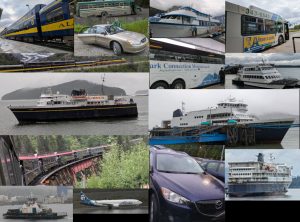
We soon realized that our usual plan-on-the-go travel style wasn’t going to work for this trip. For one thing, we needed to make reservations on most of the transportation legs, and these were already starting to sell out when we started our planning. Lodging reservations were also starting to sell out, at least at the lower-priced places — and even these were still expensive by our standards (we thought about camping, but decided to travel lighter and not bring camping gear). To get to some of the sights we wanted to see, we needed to take excursions by boat or train, which also needed to be reserved to make sure we could get the dates we wanted. So, we booked all of the transportation, lodging, and tours for our 18-day trip in advance.
Looking at a map of the places we wanted to go, logically it makes sense either to start at the south end and travel north, or start in the north and travel south. Given the availability of berths on the Alaska Marine Highway ferry in the Inside Passage, the ferry schedules, and the season ending dates for some of the tours we wanted to take, the north to south itinerary worked out better. Here’s the itinerary we ended up with:
- Monday August 19 – fly to Fairbanks (via Seattle) on Alaska Airlines.
- Tuesday August 20 – Denali Star (Alaska Railroad) train to Denali.
- In Denali we used the free park service buses to visit the sled dog kennels and took a hike at Savage River, and we also took the Denali “Transit” bus to the current end of the road. Jennifer also did the Mountain View hike.
- Thursday August 22 – Denali Star train to Anchorage.
- In Anchorage, Zach and Virginia went to the Anchorage Museum, and Jennifer went to the Alaska Botanical Garden. We tried to go to the Alaska Native Heritage center, but their shuttle bus didn’t pick us up at the location they said it would be at. We also went to Ship Creek to try to view salmon, but there weren’t any in view.
- Saturday August 24 – Coastal Classic (Alaska Railroad) train to Seward.
- In Seward, Zach and Jennifer hiked the Two Lakes Trail, and we all went on an all-day tour boat to Northwestern Fjord with Kenai Fjords Tours.
- Monday August 26 – Park Connection bus to Anchorage.
- Tuesday August 27 – Fly from Anchorage to Gustavus (via Juneau) on Alaska Airlines.
- In Gustavus, we rented a 2001 Ford Taurus from Bud’s Rent A Car (the check engine light was on and it didn’t really have shocks, but it got us from place to place just fine; it was also fun to compare cars with others who had rented similar cars from Bud’s). We all took an all-day tour boat in Glacier Bay National Park. Zach and Jennifer took a beach hike near the ferry dock, and another short hike near the Glacier Bay visitor center. We all hiked the Nagoonberry Loop trail as well.
- Thursday August 29 – Alaska Marine Highway ferry to Juneau.
- In Juneau, we rented a much nicer Mazda from Turo, and visited the Mendenhall Glacier, where we walked on the Steep Creek, Photo Point, and Trail of Time trails. We also visited the Sealaska Heritage Center in downtown Juneau.
- Saturday August 31 – Alaska Marine Highway ferry to Skagway.
- In Skagway, we all visited the Klondike Gold Rush National Historic Park, hiked to Yukatania Point, and went on a train excursion to the White Pass summit on the White Pass and Yukon Route. Zach and Jennifer also hiked to Lower Dewey Lake, the historic city cemetery, and Lower Reid Falls.
- Monday September 2 to Wednesday September 4 – Alaska Marine Highway ferry to Ketchikan (with a 4-bed berth for two nights on the ferry). We were able to get off the boat for a few hours in Sitka, where we hiked the Forest and Muskeg trail at the Starrigaven Estuary.
- In Ketchikan, we visited the Totem Heritage Center.
- Thursday September 5 – Ferry to the Ketchikan Airport, and fly home (via Seattle) on Alaska Airlines.
Highlights
Honestly, practically everything we did was a highlight! Here are a few notes:
- We saw temperate rain forest, boreal forest (or taiga), tundra, coastal mud flats, muskeg swamps, and other ecosystems. All of them were interesting, with different plants.
- The train trips and bus trip were very scenic, and we saw moose, swans (probably trumpeter swans? some with young), bald eagles, mountain goats, various ecosystems, mountains, glaciers, waterfalls, braided rivers, and Denali (the mountain).
- In Denali National Park, we saw Denali (the mountain) both days (getting views of the mountain at all is fairly rare — the park staff call it the “30% club”), beautiful scenery and ecosystems, mountain glaciers, waterfalls, braided rivers, moose, caribou, Dall sheep, groundhogs, and various birds.
- In several places we saw salmon swimming upstream to spawn (Seward, Mendenhall glacier, Sitka, Ketchikan).
- On the Kenai Fjords tour, we saw hundreds of puffins (as well as many other birds), 4 humpback whales, harbor seals, sea lions, glaciers coming down to the ocean and calving with spectacular icefalls, mountain glaciers, growlers (small icebergs), fjords, and waterfalls.
- On the Glacier Bay boat tour, we saw sea otters, sea lions, lots of birds, several humpback whales, glaciers coming down to the ocean, mountain glaciers, waterfalls, and growlers.
- On the Alaska Marine Highway boats we saw scenery (although most days not too distant, as there were low clouds), sea otters, sea lions, pods of Dall’s porpoises playing in the waves, humpback whales, jellyfish, salmon in the ocean, and lots of birds.
- The only large mammals that we were hoping to see on our trip but didn’t were orcas and bears (the areas we visited have both black bears and grizzly bears, known locally as “brown bears”). Other people traveling in the same areas at around the same time did see orcas and bears — it’s just the luck of being and looking in the right place at the right moment on the right day.
Photo Gallery
We were all traveling with phones for taking photos, not big cameras with telephoto lenses. So, we mostly found that it made more sense to take photos of people and scenery rather than trying to get shots of wildlife (which are a lot smaller than glaciers and don’t stand still; trying to get a good wildlife shot also means spending less time actually looking at the animals). It was hard to choose (Jennifer alone took over 600 photos), but here are a few photos of us and the places we visited.
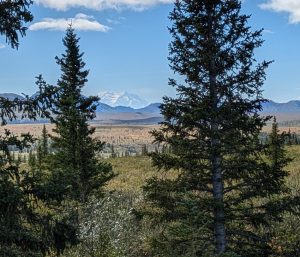
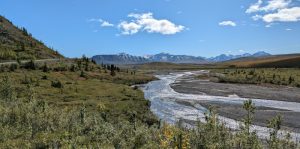
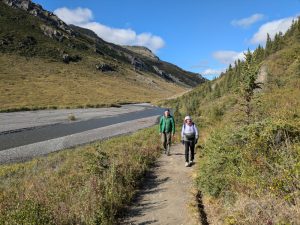
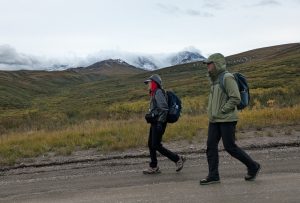
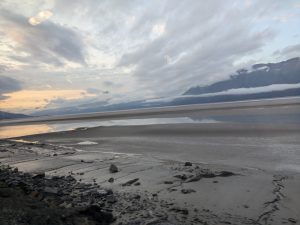
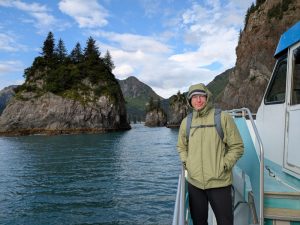
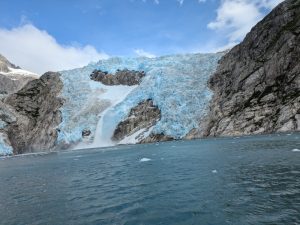
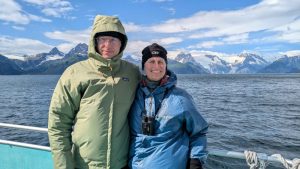
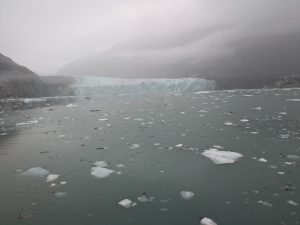
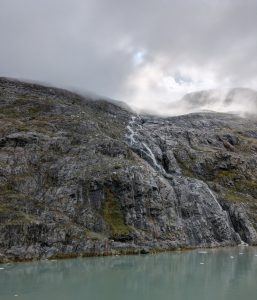
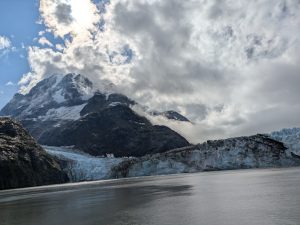
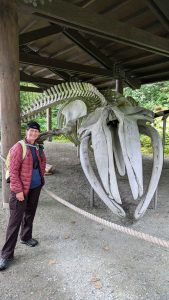
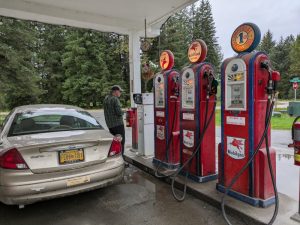
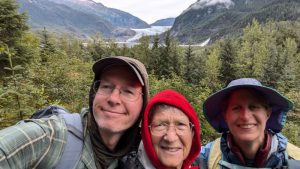
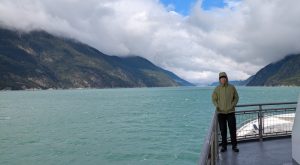

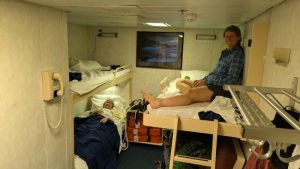
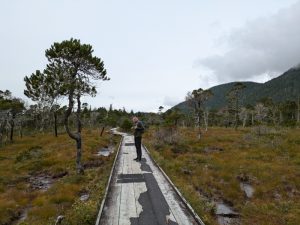
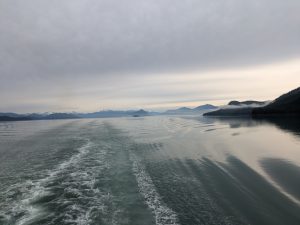
Notes and Lessons Learned
- Start planning and reserving earlier than mid-June for a summer trip to Alaska (although we made this work, we wouldn’t recommend it).
- We used a 10-year-old Lonely Planet Alaska guidebook and a new Fodor’s Alaska guidebook to aid in planning and along the way for our unstructured time. The old Lonely Planet had better information about hikes, and the Fodors was more current for other information. We actually purchased the newer edition of the Lonely Planet guidebook but decided it was awful, returned it, and got Fodor’s instead.
- Our itinerary looks pretty busy, but a lot of the time was spent on the transportation — which was relaxing and itself was part of the attraction (for the fun of riding trains and boats, the scenery, and wildlife viewing). Also, we did have some unstructured time in every place we stayed overnight (usually two nights at a time) to wander around, hike, see the local sights, relax, do laundry, etc. So, the trip worked out very well and we didn’t feel too rushed (aside from a few mornings when we had early trains, ferries, or tours). Obviously we could have spent more time in some of the places we visited, but given that we weren’t going on long hikes, kayaking, cycling, or doing other strenuous activities, the itinerary gave us about enough time in each place to at least get a sense of it and decide whether we want to return there on our next trip(s) to Alaska.
- The temperature was Alaska-late-summer-normal, meaning the highs and lows were both around 50 degrees. We had some rain, but mostly it fell at night, with occasional drizzle during the day and a few hard rain showers. It was somewhat windy in most places we visited, which was apparently why even Jennifer only came home with one insect bite (which she got in Ketchikan on the last day), but apparently we only missed mosquito swarms in some places by a few days.
- You may not need to pack shorts. Definitely bring a hat, gloves, warm layers, two pairs of shoes, and rain gear. Probably bring mosquito repellent, and a small amount of sunscreen (enough for your face, which is all we ever had exposed). Binoculars are also recommended! Both Virginia and Jennifer traveled with compact binoculars, which were helpful for viewing birds and other wildlife (and easy to carry). Zach borrowed ours occasionally, but really a lot of the time the naked eye was sufficient for great views.
- The Alaska Marine Highway boats all had excellent and very reasonably priced food available. Elsewhere in Alaska, the food was quite a bit more expensive than what we’re used to at home, but of course we were able to get excellent salmon and halibut (especially in the southern/coastal areas).
- Lodging was very expensive compared to other places in the US we’ve traveled (with the exception of Hawaii), although part of that could have been because we didn’t book our trip until June. We usually booked one of the cheapest options we could find, either a hotel or an AirBnB. All of them worked out OK (many were quirky in some way), but we would recommend avoiding the Econo Inn in Anchorage (although it had a surprisingly excellent restaurant attached!), and probably also avoid the Qupqugiaq Inn in Anchorage (if you do go there, call and make sure to get an upstairs room). The Super 8 in Ketchikan was shabby but OK, at least after they moved us to a room that smelled better. The 4-bed cabin in the Alaska Marine Highway boat “Kennicott” was good and very reasonably priced (it even had its own bathroom and shower), and the Nagoonberry Cabins lodging in Gustavus was very nice (although Virginia’s bed was a camp cot). The Moby Dick hostel in Seward and the Rainbow Village RV Park and Motel in Denali were both better than we expected from other people’s reviews.
- If you visit Denali without your own car, stay in the area just outside the park (known locally as “Glitter Gulch”). There’s a free shuttle bus run by the Princess hotel to the park, which they’ll tell you is just for people staying there, but in reality everyone staying in that area was using it (at least this summer). Most lodgings also provide transportation to and from the Denali Star train, and there are plenty of food options (including a grocery store) within walking distance.
- Both rental cars and taxis are very expensive in the small towns of Alaska that we visited, and the taxi services may charge per person. If you’re willing to walk up to a mile (possibly with your luggage) or take free shuttles or city buses, you can get by without either in Denali, Anchorage, Seward, Skagway, and Ketchikan. We would recommend a rental car in Gustavus and Juneau, as both are quite spread out. In Fairbanks there were no taxis available when we arrived at the airport, and we ended up walking to our lodging (about a mile away), so if you arrive there and don’t have a car, you might want to book lodging that provides an airport shuttle.
- Doing boat tours at both Kenai Fjords and Glacier Bay was probably overkill, as they were kind of similar, but you can’t predict the weather or wildlife viewing… They were both great; we saw more at Kenai Fjords (but on different dates it could have been the reverse).
- Traveling by Alaska Marine Highway was excellent! If you put in the effort to watch for wildlife (and dressed appropriately for wind, cold, and light rain), these boats were almost as good as the guided tours in Kenai Fjords and Glacier Bay for wildlife (especially when we put the knowledge we had from the guided tours to use). The main difference was that the tour boats stopped to view wildlife (the ferry boat ran full speed day and night), and the tours also went up close to glaciers and specifically visited areas for bird nesting and other wildlife habitats.
- A cabin on the ferry is very nice (and quite reasonably priced) for overnight trips, although you can sleep inside or outside for the price of your ticket if you bring a sleeping bag and pad, and a few people even pitched a tent on the deck.
- It would definitely have been easier to book a package tour or a cruise, but we strongly prefer to travel independently. Another factor against a large cruise ship was that although they went to places like Kenai Fjords and Glacier Bay, they couldn’t get anywhere near as close to the glaciers and wildlife as the much smaller tour boats we were on. Also, the towns in southeast Alaska where the cruise boats stopped (Skagway, Ketchikan, etc.) got very peaceful in the evenings when all the cruise passengers got back on their ships.
- Given all the things we had booked, if anything had gone wrong (missed connection, canceled boat or train, injury, health issue, etc.), it would have been difficult and/or expensive to get back on our itinerary, and medical care was not readily available everywhere we were; also, many of our bookings were partially or totally non-refundable. So for peace of mind, we bought travel insurance, which is something we don’t normally do when we travel. NerdWallet has some good tools for researching travel insurance companies and costs; we ended up with travel insurance from Generali (one policy for Zach and Jennifer and a separate one for Virginia, since they are by state of residence), which luckily we didn’t have to invoke.
- The cost for our trip was about $225 per person per night when we added it all up, including lodging, travel insurance, transportation (including taxis/transfers and air travel to/from Alaska), tours, most museums/activities, and most of our meals.